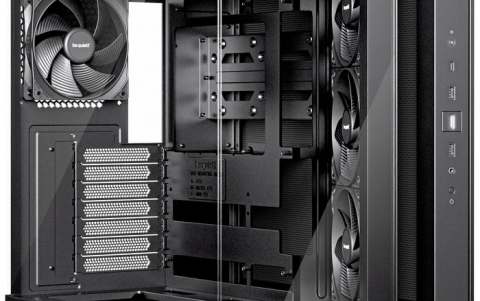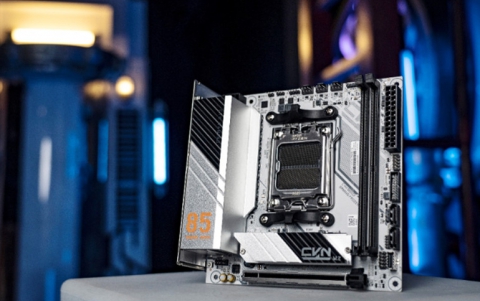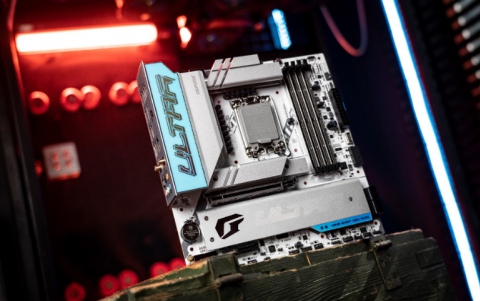DVD Media Quality Tests - DaTARIUS
2. Test Procedure - Definitions
Review Pages
2. Test Procedure - Definitions
3. DVD Analyzer - The DaTARIUS DaTABANK
4. Disc Quality Per Drive - BenQ DW-1640A
5. Disc Quality Per Drive - Plextor PX-716A
6. Disc Quality Per Drive - Pioneer DVR-110
7. Disc Quality Per Drive - LiteOn SHW-1635S
8. Disc Quality Per Drive - NEC ND-4551A
9. Disc Quality Per Disc - Page 1
10. Disc Quality Per Disc - Page 2
11. Disc Quality Per Disc - Page 3
12. Disc Quality Per Disc - Page 4
13. Disc Quality Per Disc - Page 5
14. Disc Quality Per Disc - Page 6
15. Summary
16. Final Thoughts
Disc Burning:
In an effort to ensure the integrity of the results, the disc burning setup and configuration should be the same for all discs and drives. Our PC testbed consists of a Pentium-4 workstation with the following specifications:
Intel Pentium-4 Processor 3.6 GHz/ 800Mhz FSB,
1GB DDR2-533 MHz dual channel RAM,
Seagate 120 GB 7200 rpm SATA hard drive with 8 MB cache,
Microsoft Windows XP Pro, SP2
The recording drives (burners) used in this test include:
- BenQ DW-1640A vBSHB
- Plextor PX-716A v1.08
- Pioneer DVR-110 v1.22
- LiteOn SHW-1635S vY.S0N
- NEC ND-4551A v1-8T
The PC is equipped with Nero Burning Rom 6, version v6.6.0.16 . The same image was burned onto DVD media, at the maximum allowed speed. In most cases, the speed was 16x. In cases where the burning speed was lower, this is noted in the corresponding tables.
Discs:
MID |
Brand Name |
Infomer30 |
Philips 16x DVD+R |
Prodisc S05 |
Prodisc unbranded 16x |
Prodisc F02 |
Prodisc unbranded 16x |
Prodisc R04 |
Prodisc unbranded 16x |
Daxon 016s |
BenQ DVD-R 16x |
Daxon AZ3 |
BenQ DVD+R 16x |
CMC MAG AM3 |
Philips DVD-R 16x |
CMC MAG M01 |
Ridisc DVD+R 16x |
Ritek R04 |
Traxdata DVD+R 16x |
Ritek F1 |
Traxdata DVD-R 16x |
Optodisc R016 |
Optodisc DVD-R 16x |
Optodisc OR16 |
Optodisc DVD+R 16x |
RICOH JP NR03 |
Ricoh DVD+R 16x |
MCC 004 |
Verbatim DVD+R 16x |
MCC 03RG20 |
Verbatim DVD-R 16x |
Definitions:
PI and PO:
Stands for Parity Inner and Parity Outer. Reed-Solomon Product Code
(RS-PC) is a method of
error correction employing a number of groups of Reed-Solomon
parity bytes
computed from rows, columns, or diagonals of a rectangular data array.
DVD uses two-group
method of RS-PC for error correction. The redundant codes of rows and
columns are called
Parity of the Inner code (PI) and of the Outer code (PO) respectively.
DVD discs correct small
read errors using PI, that operates on rows, and corrects large read
errors using PO, that operates
on columns of the data array.
PIE:
Stands for Parity Inner Error. The number of error corrections made on
incoming rows of data in
the first pass of the decoder using the inner parity correction code.
A row of an ECC Block that
has at least 1 byte in error constitutes a PI error. PIE is measured
over 8 ECC blocks. In any 8
consecutive ECC Blocks the total number of PI errors before correction
shall not exceed 280, as defined by the DVD specification,
or ISO/IEC
16448:2002 or ecma-267, third edition, April 2001. PIE are also called as PI
Sum
8.
POE:
Stands for Parity Outer Errors. Parity outer fails. The decoder was unable
to correct the data
using the outer parity codes. It is measured over 1 ECC block.
This test uses the measured maximum inner parity (PI Sum8) errors for recordable DVD as a high-level estimate of the quality of the media.
However, the correlation between actual loss of information and the measured
maximum PIE actually depends on several factors including the playback system
as well as the media
quality. The PI errors of 280 are conservative levels chosen
by the recordable DVD specifications as a predictor of the onset of uncorrectable
errors.
JC: Data to Clock Jitter
Jitter measurements are used to indicate the occurrence
of deviations from an ideal duration. The data on an optical disc is carried
by the length of
the pits and the distance between them. This data is extracted with a clock
signal that is synchronized with the pit edges. Jitter measurements are done
by monitoring the length of the pits and the distance between them (Data
to Data Jitter), and by monitoring the length between the edges of the pits
and
the edge of the clock (Data to Clock Jitter).
Its value is given by the standard deviation of the length of the recorded marks. It mustn't exceed 8% for DVD-R and 9% for DVD+R of the 1T reference clock signal (38.2 ns).
Review Pages
2. Test Procedure - Definitions
3. DVD Analyzer - The DaTARIUS DaTABANK
4. Disc Quality Per Drive - BenQ DW-1640A
5. Disc Quality Per Drive - Plextor PX-716A
6. Disc Quality Per Drive - Pioneer DVR-110
7. Disc Quality Per Drive - LiteOn SHW-1635S
8. Disc Quality Per Drive - NEC ND-4551A
9. Disc Quality Per Disc - Page 1
10. Disc Quality Per Disc - Page 2
11. Disc Quality Per Disc - Page 3
12. Disc Quality Per Disc - Page 4
13. Disc Quality Per Disc - Page 5
14. Disc Quality Per Disc - Page 6
15. Summary
16. Final Thoughts













